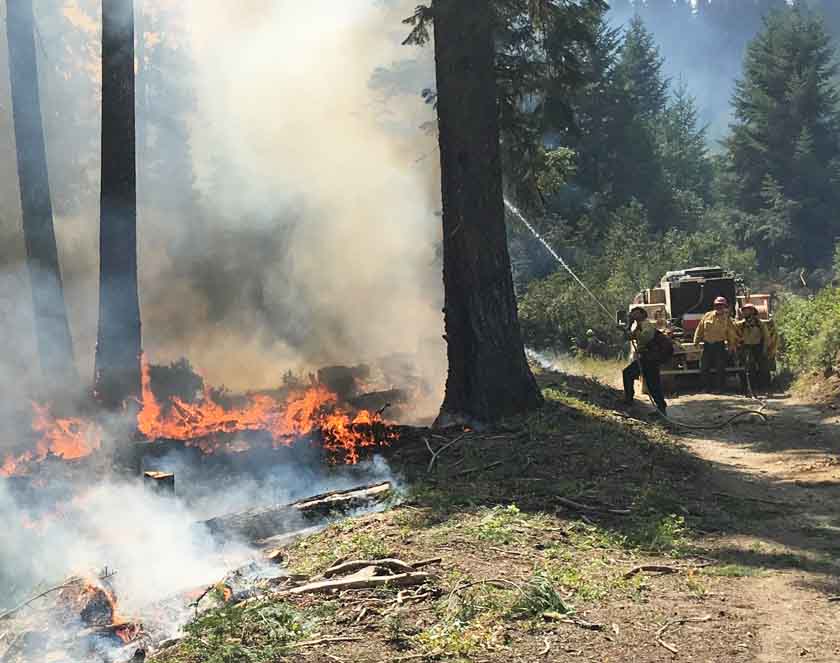Above: The path of eclipse totality in Oregon and Idaho on August 21, showing the locations of large wildfires that were active August 18, 2017.
(Revised at 9:08 a.m. MDT August 19, 2017)
Most of the wildland firefighters that will be deployed on wildfires Monday August 21 will have never seen a solar eclipse, or especially a total eclipse that will be seen in parts of Oregon, Idaho, Utah, Wyoming, Nebraska and other states. We began to wonder what fire organizations will do when in the middle of the day they are plunged into nighttime conditions.
It will be dark for up to 2.5 minutes in the path of totality (POT) but outside that track and immediately before and after the total eclipse within the track there will be plenty of light. So the actual physical effect for ground-based firefighters will be minimal.
However, as Traci Weaver, Public Affairs Officer for the U.S. Forest Service’s Pacific Northwest Region told us, the event will likely be a once in a lifetime event for most of the firefighters and will be extremely distracting, at least. Firefighters will be asked to take a break during the totality and cautioned against being near snags or slopes that could have rolling rocks.

The USFS Pacific Northwest Region, known as Region 6, includes Oregon, and the 60-mile wide path of totally will pass all the way across the state. It will include or almost include at least four large active fires, Nena Springs (46,000 acres), Whitewater (6,791), Whychus (2030), and Milli (4,565).
Region 6 did not just start thinking about the eclipse this week. They have been planning for a year on how to handle it safely. Five Central Oregon counties held a tabletop exercise that involved not only firefighters but law enforcement, hospitals, the Department of Transportation, and other agencies.
The Whitewater Fire, Ms. Weaver said, has established an Eclipse Branch. Remote spike camps on fires will have enough supplies to be self-sufficient for at least four days.
The normal tourist season combined with a busy firefighting environment and eclipse watchers flocking in from distant locations could mean ground and air traffic and logistics on fires will be affected.
A briefing paper distributed by R-6 included this analysis: Continue reading “Firefighters make preparations for the eclipse”






